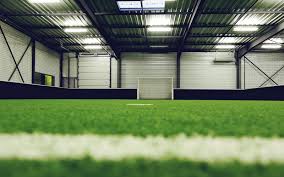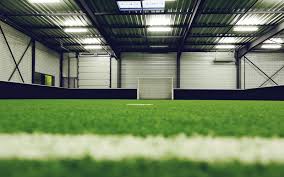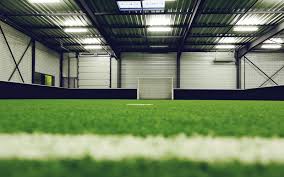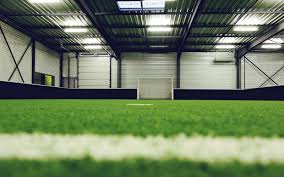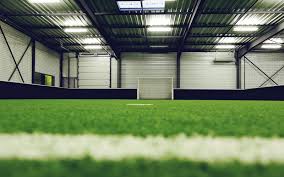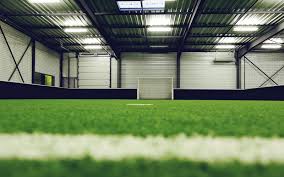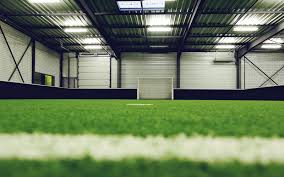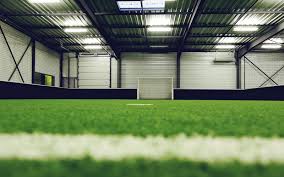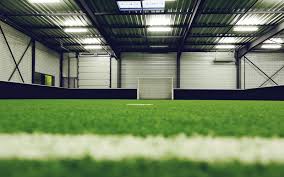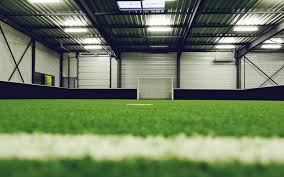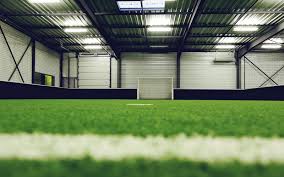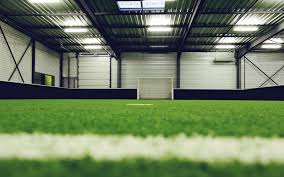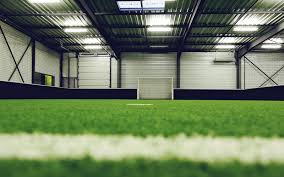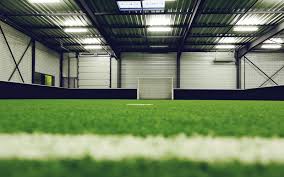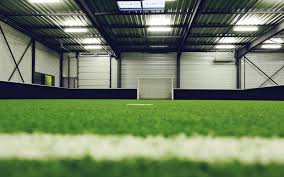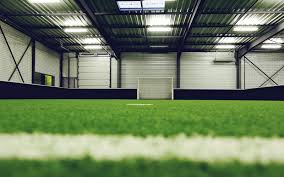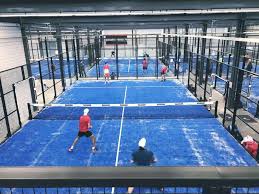Indoor Sports Facility Insurance: Complete Guide for UK Venues
Indoor sports facilities face a unique combination of risks that standard business insurance simply cannot adequately address. From trampoline parks and climbing walls to traditional sports halls and fitness centres, these venues welcome thousands of visitors each week, operate specialized equipment, employ numerous staff members, and manage substantial property assets. A single accident, equipment failure, or property incident can result in devastating financial consequences without proper insurance protection.
Whether you operate a multi-sport leisure centre, a specialist gymnastics facility, a martial arts dojo, an indoor climbing centre, or a boutique fitness studio, understanding the insurance landscape is essential for protecting your business, your staff, and your customers. This comprehensive guide explores the critical insurance coverages every indoor sports facility needs, the specific risks you face, and how to build a robust insurance programme that safeguards your operation.
Why Indoor Sports Facilities Need Specialized Insurance
Indoor sports facilities operate in a high-risk environment where physical activity, specialized equipment, and large numbers of participants create multiple exposure points. Standard commercial insurance policies typically exclude or severely limit coverage for sports-related activities, leaving facility owners dangerously underinsured.
Key Risk Factors
- Participant Injuries: Sports activities inherently carry injury risk, from minor sprains to serious fractures or head injuries
- Equipment Failure: Specialized sports equipment requires regular maintenance and can cause serious injury when it fails
- Supervision Liability: Inadequate supervision or instruction can lead to preventable accidents and subsequent claims
- Property Damage: Sports facilities contain expensive flooring, walls, equipment, and building infrastructure vulnerable to damage
- Business Interruption: Facility closures due to damage, equipment failure, or regulatory action can devastate revenue
- Professional Negligence: Coaches, trainers, and instructors can face claims related to their professional advice or training methods
Essential Insurance Coverages for Indoor Sports Facilities
Public Liability Insurance
Public liability insurance is the cornerstone of any sports facility insurance programme. This coverage protects your business when visitors, participants, or spectators suffer injury or property damage on your premises or as a result of your operations.
For indoor sports facilities, public liability coverage should address:
- Slip, trip, and fall accidents on wet floors, stairs, or uneven surfaces
- Injuries from contact with equipment, walls, or other participants
- Accidents in changing rooms, showers, or common areas
- Injuries resulting from inadequate facility maintenance
- Claims from spectators or visitors not participating in activities
Most sports facilities require public liability coverage of at least £5 million, though many insurers recommend £10 million for larger operations or facilities with higher-risk activities like trampolining or climbing.
Employers Liability Insurance
If you employ anyone—from reception staff and cleaners to coaches and facility managers—employers liability insurance is a legal requirement in the UK. This coverage protects your business if employees suffer injury or illness arising from their work.
Indoor sports facilities face specific employers liability risks including:
- Coaches injured while demonstrating techniques or spotting participants
- Maintenance staff injured while repairing or servicing equipment
- Repetitive strain injuries from coaching or instructing
- Slips and falls in wet areas or on sports surfaces
- Injuries from moving or setting up heavy equipment
The legal minimum coverage is £5 million, but many facilities opt for higher limits given the physical nature of the work environment.
Property and Contents Insurance
Your facility represents a significant capital investment. Property insurance protects the building structure, while contents insurance covers equipment, furnishings, and stock against damage or loss from fire, flood, theft, vandalism, and other insured perils.
Key considerations for sports facilities include:
- Specialized Flooring: Sports flooring systems are expensive to install and repair
- Fixed Equipment: Climbing walls, basketball hoops, gymnastics apparatus, and other permanent installations
- Moveable Equipment: Mats, weights, cardio machines, sports equipment, and training aids
- Technology: Booking systems, sound systems, lighting, and security equipment
- Changing Room Facilities: Lockers, benches, showers, and fixtures
Ensure your policy reflects replacement cost rather than actual cash value to avoid being underinsured when equipment needs replacing.
Business Interruption Insurance
Business interruption insurance compensates for lost revenue and ongoing expenses when your facility cannot operate due to an insured event. For sports facilities with membership models or regular class schedules, even short closures can significantly impact cash flow.
This coverage typically includes:
- Lost membership fees and class revenues during closure
- Ongoing staff wages and rent payments
- Additional costs to operate from temporary premises
- Marketing expenses to rebuild customer base after reopening
Consider extended indemnity periods of 12-24 months, as sports facilities often take time to rebuild their customer base after significant closures.
Professional Indemnity Insurance
If your facility employs coaches, personal trainers, physiotherapists, or other professionals who provide advice or instruction, professional indemnity insurance is essential. This coverage protects against claims arising from professional negligence, errors, or omissions.
Common professional indemnity claims include:
- Injuries resulting from inappropriate training programmes
- Claims that inadequate instruction led to poor technique and injury
- Allegations of negligent advice regarding fitness or nutrition
- Claims related to failure to identify pre-existing health conditions
Equipment Breakdown Insurance
Specialized sports equipment represents a significant investment and is critical to your operations. Equipment breakdown insurance covers the cost of repairing or replacing equipment that fails due to mechanical or electrical breakdown, as well as associated business interruption losses.
This coverage is particularly valuable for:
- HVAC systems essential for climate control
- Specialized air handling systems for indoor sports
- Automated climbing wall systems
- Electronic timing and scoring systems
- Refrigeration units for ice rinks or cooling systems
Cyber Insurance
Modern sports facilities collect and store significant personal data through membership systems, online booking platforms, and payment processing. A data breach or cyber attack can result in regulatory fines, notification costs, and reputational damage.
Cyber insurance for sports facilities should cover:
- Data breach response costs and customer notification
- Regulatory fines under GDPR
- Business interruption from system downtime
- Cyber extortion and ransomware attacks
- Reputational harm and crisis management
Facility-Specific Insurance Considerations
Trampoline Parks and Bounce Facilities
Trampoline facilities face some of the highest insurance premiums in the indoor sports sector due to elevated injury rates. Essential coverages include enhanced public liability limits, specific trampoline activity coverage, and robust waiver systems. Insurers will scrutinize your safety protocols, staff training, supervision ratios, and maintenance schedules.
Climbing Centres and Bouldering Gyms
Climbing facilities require specialized coverage for both roped climbing and bouldering activities. Key considerations include equipment inspection protocols, staff qualifications, fall zone specifications, and whether you allow unsupervised climbing. Auto-belay systems require specific coverage and maintenance documentation.
Gymnastics and Trampolining Centres
Gymnastics facilities need coverage that addresses both recreational and competitive training environments. Insurers assess coach qualifications, progression systems, equipment standards, and whether you host competitions. Foam pits, trampolines, and spring floors all require specific consideration.
Martial Arts Facilities
Martial arts dojos and combat sports facilities face unique risks from contact activities. Coverage should address sparring injuries, competition activities, weapons training, and the qualifications of instructors. Some insurers exclude certain high-risk martial arts or require additional premiums.
Multi-Sport Leisure Centres
Facilities offering multiple activities need comprehensive coverage addressing each sport's specific risks. Insurers will want detailed information about all activities offered, participation numbers, supervision arrangements, and how different activities are segregated to prevent interference.
Swimming Pools and Aquatic Centres
Pool facilities require specialized coverage addressing drowning risk, chemical storage, water quality management, and lifeguard qualifications. Additional considerations include diving boards, slides, wave machines, and whether you offer swimming instruction or aquatic fitness classes.
Risk Management Best Practices
Effective risk management not only reduces your exposure to claims but also helps secure better insurance terms and premiums. Insurers reward facilities that demonstrate robust safety cultures and proactive risk management.
Safety Protocols and Documentation
- Maintain comprehensive written safety policies and procedures
- Conduct regular risk assessments for all activities and update them annually
- Document all equipment inspections and maintenance activities
- Keep detailed records of staff training and qualification renewals
- Implement and enforce clear rules for facility users
Staff Training and Qualifications
- Ensure all coaches hold appropriate national governing body qualifications
- Provide regular safeguarding and first aid training
- Train staff in emergency procedures and evacuation protocols
- Maintain CPR and AED training for all customer-facing staff
- Document all training activities and maintain training records
Equipment Maintenance
- Establish regular inspection schedules for all equipment
- Use qualified technicians for specialized equipment maintenance
- Remove damaged or worn equipment from use immediately
- Maintain manufacturer-recommended service intervals
- Keep comprehensive maintenance logs
Participant Screening and Waivers
- Implement health screening questionnaires for new participants
- Use properly drafted liability waivers (while understanding their limitations)
- Provide clear safety briefings before activities
- Enforce age restrictions and supervision requirements
- Maintain accurate participation records
Managing Insurance Claims
Despite best efforts, incidents will occur. How you manage claims can significantly impact outcomes and future premiums.
Immediate Response
- Provide immediate first aid and call emergency services if needed
- Document the incident thoroughly with photos and witness statements
- Complete detailed accident report forms while details are fresh
- Preserve any equipment or environmental factors involved
- Notify your insurer promptly, even for minor incidents
Investigation and Documentation
- Conduct internal investigations to identify root causes
- Review CCTV footage if available
- Gather statements from staff and witnesses
- Document equipment condition and maintenance history
- Review relevant policies and procedures
Communication
- Maintain professional communication with injured parties
- Avoid admitting liability or making commitments
- Direct all formal claim communications through your insurer
- Keep detailed records of all conversations and correspondence
Choosing the Right Insurance Provider
Not all insurers understand the sports facility sector. Selecting a provider with relevant experience can make a significant difference in coverage quality and claims handling.
Key Selection Criteria
- Sector Experience: Choose insurers with proven experience in sports facility insurance
- Coverage Flexibility: Ensure policies can be tailored to your specific activities and risks
- Claims Handling: Research the insurer's reputation for fair and efficient claims settlement
- Risk Management Support: Look for insurers offering risk assessment and loss prevention resources
- Financial Strength: Verify the insurer's financial stability and ability to pay claims
Working with Specialist Brokers
Specialist insurance brokers who focus on sports and leisure facilities can provide significant value by:
- Accessing specialist insurers you cannot approach directly
- Negotiating better terms and premiums on your behalf
- Explaining complex policy terms and exclusions
- Assisting with claims preparation and negotiation
- Providing ongoing risk management advice
Factors Affecting Insurance Costs
Indoor sports facility insurance premiums vary significantly based on numerous factors. Understanding these can help you manage costs while maintaining appropriate coverage.
Primary Cost Drivers
- Activities Offered: Higher-risk activities like trampolining or climbing command higher premiums than lower-risk activities like badminton or table tennis
- Facility Size: Larger facilities with higher capacity and more equipment face greater exposure
- Annual Turnover: Revenue levels often determine premium calculations
- Claims History: Previous claims significantly impact future premiums
- Risk Management: Robust safety protocols and staff training can reduce premiums
- Location: Urban facilities may face higher theft and vandalism risks
- Building Age and Condition: Older buildings may have higher property insurance costs
- Security Measures: Alarm systems, CCTV, and secure access can lower premiums
Ways to Reduce Insurance Costs
- Implement comprehensive risk management programmes
- Maintain excellent safety records and document all procedures
- Invest in staff training and maintain qualification records
- Install modern security and fire prevention systems
- Consider higher voluntary excess levels to reduce premiums
- Bundle multiple coverages with one insurer for multi-policy discounts
- Conduct regular equipment maintenance and keep detailed records
- Review coverage annually to ensure you are not over-insured
Regulatory and Legal Considerations
Indoor sports facilities must comply with numerous regulations, and insurance plays a critical role in meeting legal obligations and managing compliance risks.
Health and Safety Regulations
The Health and Safety at Work Act 1974 places legal duties on facility operators to ensure the safety of employees, customers, and visitors. Insurance provides financial protection when health and safety failures lead to accidents, but it does not replace the legal duty to maintain safe operations.
Safeguarding Requirements
Facilities working with children and vulnerable adults must implement robust safeguarding policies. While insurance can cover claims arising from safeguarding failures, insurers increasingly require evidence of DBS checks, safeguarding training, and appropriate supervision ratios.
Data Protection and GDPR
Sports facilities collecting personal data must comply with GDPR requirements. Cyber insurance helps manage the financial consequences of data breaches, but facilities must implement appropriate technical and organizational measures to protect customer data.
Building Regulations and Fire Safety
Compliance with building regulations and fire safety legislation is essential. Insurance policies may exclude claims arising from non-compliance, so maintaining certificates, conducting fire risk assessments, and ensuring adequate fire detection and suppression systems is critical.
Accessibility Requirements
The Equality Act 2010 requires reasonable adjustments for disabled users. Public liability insurance covers claims related to accessibility failures, but proactive compliance reduces risk and demonstrates inclusive practice.
Common Policy Exclusions and Limitations
Understanding what your insurance does not cover is as important as knowing what it does. Common exclusions in sports facility policies include:
Standard Exclusions
- Intentional Acts: Deliberate damage or injury caused by you or your staff
- Contractual Liability: Liability assumed under contract that would not otherwise exist
- Pollution: Gradual pollution or contamination (though sudden pollution may be covered)
- War and Terrorism: Often excluded or requiring additional premium
- Nuclear Risks: Damage from radioactive contamination
- Wear and Tear: Gradual deterioration of property and equipment
- Cyber Events: Unless specifically covered by cyber insurance
Activity-Specific Exclusions
- Certain high-risk martial arts or combat sports
- Unsupervised activities or open gym sessions without appropriate coverage
- Activities conducted off-premises without notification
- Competitions or events not declared to insurers
- Activities led by unqualified instructors
Reading the Fine Print
Always review policy wording carefully, paying particular attention to:
- Definitions of key terms like "injury," "damage," and "occurrence"
- Conditions that must be met for coverage to apply
- Notification requirements for claims and incidents
- Territorial limits and whether coverage extends beyond your premises
- Subrogation clauses that may affect relationships with third parties
Annual Insurance Review Process
Your facility evolves, and your insurance should evolve with it. An annual review ensures your coverage remains appropriate and cost-effective.
Review Checklist
- Activities: Have you added new activities or discontinued others?
- Equipment: Have you purchased significant new equipment or upgraded facilities?
- Capacity: Has your maximum capacity or typical attendance changed?
- Revenue: Has your turnover increased or decreased significantly?
- Staff: Have staffing levels or roles changed?
- Property Values: Do your coverage limits reflect current replacement costs?
- Claims: Have you experienced claims that might indicate coverage gaps?
- Regulations: Have new regulations created additional compliance requirements?
Market Comparison
Every few years, consider obtaining quotes from alternative insurers to ensure you are receiving competitive terms. However, avoid switching insurers solely based on price without carefully comparing coverage terms, as cheaper policies may contain significant coverage gaps.
Real-World Scenarios
Scenario 1: Equipment Failure Injury
A climbing wall auto-belay system malfunctioned, causing a climber to fall and sustain serious injuries. The facility's public liability insurance covered the £250,000 claim, but the investigation revealed inadequate maintenance records. The insurer increased premiums at renewal and required implementation of enhanced maintenance protocols as a condition of continued coverage.
Lesson: Comprehensive maintenance documentation is essential not only for safety but also for demonstrating due diligence to insurers.
Scenario 2: Flood Damage and Business Interruption
A burst pipe flooded a gymnastics facility, damaging specialized flooring and equipment. The facility was closed for three months during repairs. Property insurance covered the £180,000 repair costs, while business interruption insurance replaced lost membership fees and covered ongoing expenses, preventing financial collapse during the closure.
Lesson: Business interruption insurance is critical for facilities with ongoing financial commitments and membership-based revenue models.
Scenario 3: Coaching Negligence Claim
A personal trainer was accused of designing an inappropriate training programme that allegedly caused a client's injury. The facility's professional indemnity insurance covered legal defense costs and ultimately settled the claim for £45,000, protecting the facility from financial liability.
Lesson: Professional indemnity insurance is essential when employing coaches, trainers, or other professionals providing advice or instruction.
Getting a Quote for Your Indoor Sports Facility
When approaching insurers or brokers for quotes, prepare comprehensive information about your facility to ensure accurate pricing and appropriate coverage.
Information Insurers Will Request
- Detailed description of all activities offered
- Facility size, capacity, and layout
- Annual turnover and projected revenue
- Number of employees and their roles
- Staff qualifications and training programmes
- Equipment inventory and values
- Building age, construction, and condition
- Security and fire prevention measures
- Claims history for the past five years
- Risk management policies and procedures
- Membership numbers and typical daily attendance
- Whether you host competitions or special events
Questions to Ask Insurers
- Are all our activities specifically covered, or are any excluded?
- What are the coverage limits for each section of the policy?
- What excess applies to different types of claims?
- Are there any activity restrictions or supervision requirements?
- How quickly must we notify you of incidents or potential claims?
- What risk management support do you provide?
- How are claims typically handled, and what is the average settlement time?
- Are there any circumstances that would void coverage?
Conclusion
Insurance for indoor sports facilities is complex, reflecting the diverse risks these operations face. From participant injuries and equipment failures to cyber threats and business interruption, comprehensive coverage is essential for protecting your investment and ensuring long-term sustainability.
The key to effective insurance protection lies in understanding your specific risks, selecting appropriate coverages, implementing robust risk management practices, and working with insurers who understand the sports facility sector. While insurance premiums represent a significant operating cost, they are a small price to pay compared to the potentially catastrophic financial consequences of operating without adequate protection.
As your facility grows and evolves, your insurance needs will change. Regular reviews, open communication with your insurer or broker, and a commitment to safety and risk management will ensure your coverage remains appropriate and cost-effective.
Whether you are launching a new facility or reviewing coverage for an established operation, investing time in understanding and optimizing your insurance programme is one of the most important business decisions you will make. The right insurance provides not just financial protection, but also peace of mind that allows you to focus on what matters most: providing excellent sports and fitness experiences for your community.
Get Expert Advice on Indoor Sports Facility Insurance
At Insure24, we specialize in providing tailored insurance solutions for indoor sports facilities across the UK. Our experienced team understands the unique challenges you face and can design comprehensive coverage that protects your business, your staff, and your customers.
Contact us today for a no-obligation quote and discover how we can help you build the right insurance programme for your facility.
Call us on 0330 127 2333 or visit www.insure24.co.uk to get started.


 0330 127 2333
0330 127 2333
